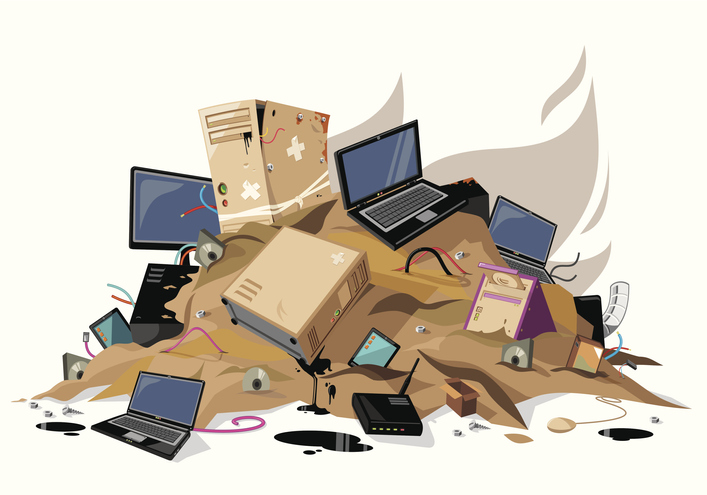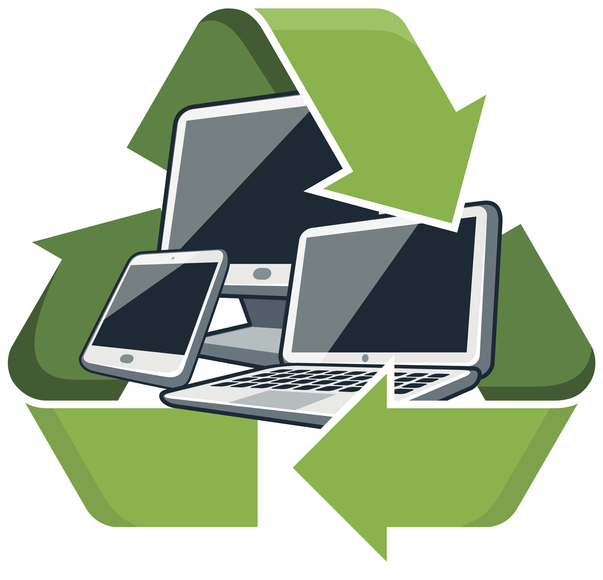Electronic waste (e-waste) describes any technological equipment that is at the end of its useful life. Each year, people dispose of millions of tons of e-waste. Throwing e-waste into a landfill contributes to environmental hazards, health risks, and rare resource waste, but only 29% of e-waste is recycled even though there are numerous electronic recycling services.
Why should you properly dispose of your old electronics?
 If you do properly dispose of your e-waste, you could help cut down on the hundreds of millions of e-waste that is improperly disposed each year, preventing environmental devastation.
If you do properly dispose of your e-waste, you could help cut down on the hundreds of millions of e-waste that is improperly disposed each year, preventing environmental devastation.
Electronics that are improperly disposed of pose a great threat to the environment. For one, electronics contain plastics, precious metals, and glass that can be recycled and reused. If electronics end up in the landfill, more resources must be created and mined, contributing to further resource depletion and environmental destruction. It also requires the re-treatment of these materials, which contributes to energy consumption.
Additionally, electronics contain toxic chemicals that can leach into the ground, affecting wildlife and water sources. If electronics are improperly disposed of they can endanger surrounding communities, devastating human populations that have been exposed to large amounts of discarded electronics by increasing their number of cases of lead poisoning, miscarriages, and cancer. Similarly, one must make sure that your e-waste is sent to a treatment center with strict safety precautions. Otherwise, you are putting the workers and those around them at risk for many of the aforementioned diseases.
How do you “properly dispose” electronics?
 Once your electronic device reaches the end of its useful life for you, the first step is to try to donate it. Any refurbishing or recycling process will involve some amount of waste, so donating is always the best option if possible. Places like the goodwill will accept old devices. If the device no longer functions, you can still try to donate it to a giveback program that refurbishes old devices. Many electronics companies offer tech-take back programs for their electronic equipment. Make sure that if they can’t refurbish the device they will recycle it.
Once your electronic device reaches the end of its useful life for you, the first step is to try to donate it. Any refurbishing or recycling process will involve some amount of waste, so donating is always the best option if possible. Places like the goodwill will accept old devices. If the device no longer functions, you can still try to donate it to a giveback program that refurbishes old devices. Many electronics companies offer tech-take back programs for their electronic equipment. Make sure that if they can’t refurbish the device they will recycle it.
Finally, if you cannot find somewhere to donate the device, recycle it. There are recycling services for pretty much any electronic device or appliance, but you should make sure that the recycler is certified. Specialized recycling facilities often offer mail-in and drop-off facilities for those outside of their districts.
How can you tell if your e-recycler is certified?
There are two e-waste recycling certifiers in the U.S: E-Stewards and R2. E-recyclers who have certification from either of the two organizations must pass several guidelines. The certification organizations check in with the recyclers to make sure that they continue to treat the waste properly and extract as much useful material as possible from the electronic devices with minimal environmental impact.
